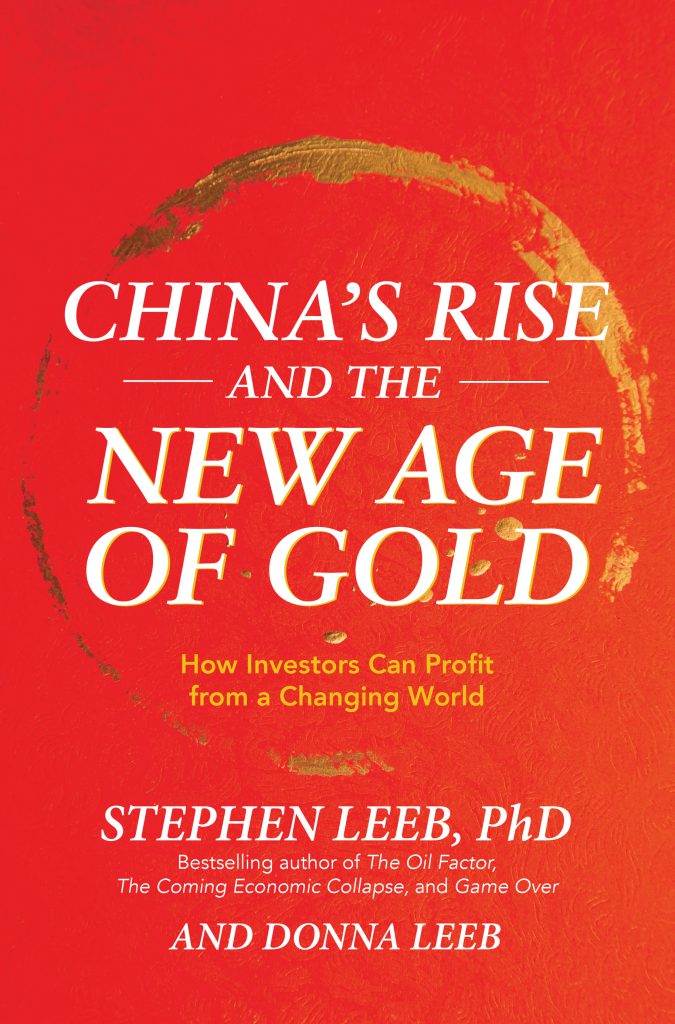In October 2024, an article appeared in the prestigious journal, Nature Ageing, with the somewhat depressing title: “Implausibility of radical life extension in humans in the twenty-first century.” The authors, S. Jay Olshansky et al. give greater clarity to their claim in the first paragraph, viz., “Our analysis suggests that survival to age 100 years is unlikely to exceed 15% for females and 5% for males unless processes of biological aging can be markedly slowed….” But instead of offering a bleak assessment of humanity’s future, the article by virtue of various errors and oversights unwittingly points the way to a brighter future for all. In the process, the article also makes a powerful argument for a cooperative and harmonious world. In this and forthcoming blogs we will focus on the argument that a harmonious world will be one in which life expectancy (LE) can be dramatically increased. Natural inferences that we’ve assessed will be ways in which you can increase your own LE as well as make a lot of extra money in the process.
Yes, we know that sounds like a tall order. At the outset we agree that there are no guarantees but if you follow the reasoning and data stemming from the major miscues in the Olshansky article, our seemingly utopian arguments become a realistic goal. Olshansky’s argument is based on backward looking data from which he infers that the requisite gains in mortality necessary for radical L –defined as an increase of 3 years for every decade– is extremely unlikely. Moreover, he observes that while overall mortality rates have been improving, the morality rates in older age groups have been decelerating relative to those in younger groups. This points to a definite leveling off in maximum LE, hence capping LE not much above current levels. In order to achieve radical life extension relative mortality rates for the oldest age groups would have to improve more in concert with improvement in younger groups.
We view these arguments as typical of a material mind set. After all, material objects and especially complicated material objects like human beings wear out. We have pointed out previously that materiality has led to a focus on short-term results, which largely accounts for a slowdown in technological breakthroughs. Even A.I., for example, can be seen as just an extension of ever more complicated computer algorithms –just an extension of existing technologies rather than the development of novel technologies. As an example, the foundation of today’s IT has been miniaturization which was made possible when the transistor replaced vacuum tubes. With miniaturization reaching physical limits and the electricity needed to operate ever more complex algorithms soaring, major breakthroughs are critical. Replacing electrons with photons, i.e., light, would constitute a meaningful breakthrough. An all-purpose quantum computer would be the ultimate computational breakthrough. China’s ever widening lead in STEM research suggests either we cooperate, find the spirituality that led us to greatness in post-WWII period, or risk being left at the gate, not just in STEM but biological sciences as well. It is hardly surprising that articles on limitations of LE have Western provenance.
Gains in LE have indeed slowed –and indeed slowed markedly in the U.S. and most other rich countries. But to assume this slowdown is going to persist is nothing more than restating a materialistic view on life, a view that has a hawk like focus on the short term and abjures faith in the long-term future of humanity. Olshansky, probably without realizing it, makes the point himself when he notes, at the outset of his article, that for millennia LE lingered in the 20–50-year range, before breakthroughs in public health and medicines led to spectacular advances. Between 1700 and 1800 LE increased by about 5 years.
The same, backward looking, arguments he makes today about life extension someone could have made in 1800. Moreover, the arguments circa 1800 would likely have been much stronger than those Olshansky currently makes. Today there are powerful factors clearly in view that Olshansky does not consider. These factors not only assure large generational gains in LE, but give reason to believe that the gains will continue for the indefinite future. The catch is that in order to realize the potential of what could lie ahead of us we will have to turn back the clock to the time of a more spiritual America. If President Trump can, in concert with other world leaders, replace today’s confrontational mind set with a cooperative one, then the limits to LE would not be in view.
Addressing Social Inequalities Plays a Major Role in Life Extension
One factor Olshansky overlooks are inequalities, and the roles wealth and income play in LE. In most cases, the greater the wealth the greater LE. In the U.S. the top 1% of the population lives about 15 years longer than the bottom 1%. LE and income are highly correlated in most of the world and especially in the West. It’s likely that no country tops the 15-year gap that exists in the U.S.
But you can only take this relationship between inequalities and LE so far. In April 2025, The New England Journal of Medicine published an article comparing the U.S. with European countries. Surprisingly, though Americans in the highest income quartile had higher incomes than their European counterparts, the richest Americans had lower LE than their European counterparts. In other words, though income and wealth are powerful drivers of LE, inequalities can be a partial offset. This suggests that in countries like the U.S., if the money was spread around a little more evenly –while the poor might gain the most– even the very rich might live longer. But in a material world –one without spirituality– money trumps everything else including the abstract and hard to measure concept of LE.
Ironically, one of the biggest holes –outright inconsistency– in Olshansky’s analysis was his focus on Hong Kong. At first glance you might think that Hong Kong, though not even a country, when included in a list of countries has the highest LE. But why pick a territory of a country, whose multi-decade gains in LE do not even satisfy Olshansky’s definition of radical life extension – i.e. a gain of three years for every ten. A much better example would have been South Korea, a country that has been exhibiting radical LE since the beginning of the century –actually since 1990– and whose current LE at 83 is strikingly close to that of Hong Kong. More precisely, the gains in South Korea’s LE since 1990 have been 50% greater than those of Hong Kong. Odd too is that Olshansky included South Korea in a list of long-lived countries but instead focused on Hong Kong. Whatever the reason may have been, it works out well for us as both Hong Kong and South Korea have characteristics that contribute to our case that radical extension of LE is a strong possibility in a cooperative world.
To finish this blog, we want to show that it is not hard to get to 95 as a plausible LE for countries within a world that prizes cooperation. Indeed, this seemingly high potential LE is a consequence of theoretically combining those practices used by some of the longest-lived countries and applying them to longest lived portions of population. In other words, our estimates only rely on what is already known and being used and the assumption: that a more cooperative world would be a more equitable one.
In the U.S. the LE of the country is about 78.3 years. Estimates of the LE of those in the top 10% exceeds 85 years or a seven-year difference from the average. The extreme inequalities in the U.S. are one reason the difference is as large as it is. Hong Kong the world’s longest-lived population has inequalities that exceed those of the U.S.
It follows that there are comparable LE and life extension differences between high- and low-income groups. While most acknowledge that Hong Kong’s long LE comes from an advanced health care system to which all citizens have some access. The province is also known for its heavy emphasis on heart health. Both citizens and professionals are exposed to the importance of diet and exercise as a means of maintaining a healthy cardiovascular system. This emphasis on a healthy heart has very likely contributed to the province’s long LE in that heart disease, unlike the majority of countries is not the number one cause of death.
Still, there is ample evidence that inequalities likely lead to major differences in LE among high- and low-income groups. For example, a 2022 article in a Lancet publication noted:
“Academic studies consistently report apparent socioeconomic inequalities in health in Hong Kong, not only in terms of self-rated health but also other health outcomes such as obesity and cardiometabolic risks, multimorbidity, and frailty.”
Also relevant is that though all citizens have access to health care, the system is two tier which is still extremely advantageous to the wealthy. Data on LE and life extension measured by income is not available, but the evidence strongly suggests the differences could easily be on par or even exceed those of the U.S. This suggests high income earners in Hong Kong should have an LE of about 92.
We get an additional three years by an examination of South Korea’s causes of death. What’s unusual about the only country that has satisfied the definition of radical life extension for the last three decades is that causes of death are markedly different between men and women. While cancers are the leading cause of death among males, cardiovascular diseases lead among women. Also true is that Alzheimer’s disease is the fourth leading cause of death among women but not among the leading ten causes in men. These disparities point to a health care system that is intensely focused on individuals rather than a one size fits all approach. Professionals are educated in both Eastern and Western medical practices, suggesting doctors have a wide access of choices in treating patients. Beyond that, Asian cultures are known for being filled with spirituality and deep morals that resonate with the populations and to outsiders can look present culture of peace.
Kane Tanaka, a Japanese woman and the longest-lived verified person of modern times, reached the remarkable age of 119. Her longevity is often attributed to a balanced diet, active mind, strong family ties, and the cultural emphasis on purpose and harmony found in many Asian societies. From Buddhist beliefs and practices to customs of honoring ancestors and living harmoniously as a people, their societies reflect less dramatic and far-reaching inequalities and more appreciation for a world centered around concepts with more meaning than profit. In many cases death rates are dramatically lower than those in other countries. Colorectal survival rates are about 73% compared with the mid-50 s in long lived countries like Denmark and Germany.
Making precise projections of what a South Korean health system would mean to another or other countries throughout the world is something that would require much more analysis and space. Moreover, to be honest, any calculation regarding LE is filled with complexities some of which make next to no sense. For example, in an instance such as an active war in which many young soldiers are killed, within certain calculations this will be reflected in the math, which dramatically affects the LE of infants born in that time frame. That said, we think it reasonable to assume other countries adopting the breath and focus of South Korean health care could easily add as many as three years to LE. If we add those three years to the upper income earners we have a reasonable lid on LE of 95 years. The next blog will start talking about issues that are there for the taking – but and this is critical, not related to anything that we have discussed above. Our goal is to make a case why a cooperative world could extend LE well into triple digits. An added and powerful bonus is that a less material world will sharply and dramatically raise the odds of breakthroughs not yet dreamt up. We want you to ask: is the apotheosis of materiality really worth leaving so many years left unlived?
Take Your Investment Strategy to the Next Level
Affordable. Essential. By joining Turbulent Times Investor, you’ll gain full access to 75 Stocks in the Core Investment Portfolio recommendations… Updates delivered directly to your inbox throughout the month… Instant buy/sell alerts.
Join now for just $10 per month
Most investors have yet to grasp the extent to which the world is changing and the profound impact this will have on the financial markets. The global stock markets are rapidly approaching an era of unprecedented turbulence. Investors face enormous risks—but also some great opportunities, which we highlight and monitor in our Core Investment Portfolios. Don’t miss out—join now to stay in the loop.
Take advantage of our exclusive *limited-time offer*
























